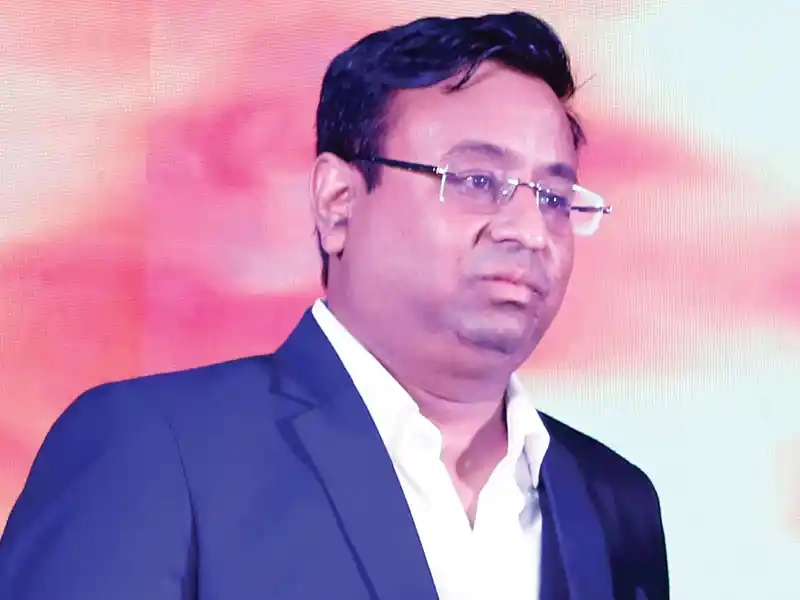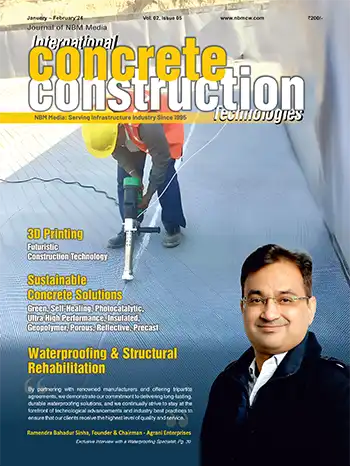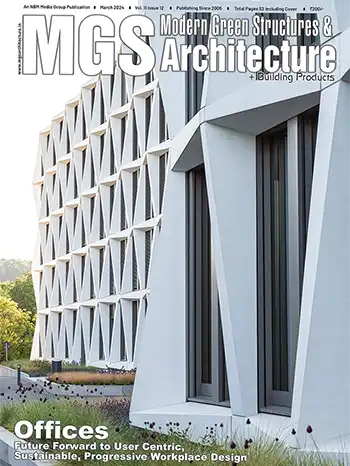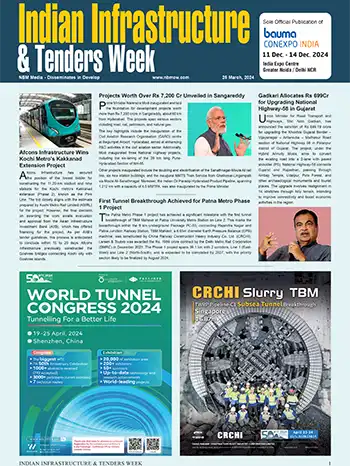India’s Cement Industry to rise exponentially

How do you view the demand for cement/RMC in view of the current growth in the Indian Construction and Infrastructure segments?
Our country has already entered the ‘Amrit Kal’ state under the leadership of Hon’ble Prime Minister Narendra Modi ji. The Central & State Governments have also approved infra development and are spending huge amounts on the construction sector. This is certainly a good sign for the Cement / RMC industry.
Programs like Housing for All, the PM Gati Shakti Yojna, Smart City, Har Ghar Jal etc will further boost demand for cement and other building materials. At present, India’s per capita cement consumption is lower at 240 kg/person/annum as against the world’s average of 500 kg. So, to meet the ever-increasing demand for cement, the Indian Cement Industry may have to import raw materials like gypsum, clinker etc.
As part of your green initiatives what solutions have been introduced by the company and how do they help reduce carbon footprint?
We are using maximum supplementary compendium materials like fly ash and slag for production of PPC / Composite/Slag Cement to reduce carbon footprint. We are also committed to Net Zero compliance.
We are controlling direct emissions by collaborating with transporters that have electrical trucks for transporting cement and other raw materials, besides having fuel combustion on site such as gas, boiler, air-conditioning leakage etc.
To reduce indirect emission from electricity purchased and used in our plants, we are in the process of installing solar power units near our grinding units. We are also adhering to the guidelines for maintenance of plants at regular intervals.
However, there are other external sources of indirect emissions over which we have no control. These usually contribute the most to the carbon footprint of a company. They include emissions due to business travel, procurement and transport of raw materials, waste management, water treatment etc. We are also giving priority to suppliers of packaging material where carbon emission is minimum.
We are planning to manufacture Composite Cement to reduce carbon footprint.
What is your view of the construction and infrastructure projects in the coming years?
India is developing fast, and more and more infrastructure projects will need to be developed to keep pace with the country’s growth. The PM Gati Shakti is a transformative approach for economic growth and sustainable development which is being driven by seven engines, namely, Roads, Railways, Airports, Ports, Mass Transport, Waterways and Logistic Infrastructure. These seven engines are supported by Energy, Transmission, IT, Bulk Water & Sewerage, and Social Infrastructure.
In the Budget 2022-23, the Government has focused on major projects like the expansion of 25,000 km National Highway network. In addition, our projects and programs like Multimodal Logistic Parks, One Station-One Product, Mass Urban Transport including Connectivity to Railways (Metros), the Parvatmala, River Linkage Project, Smart Cities, connecting 3.80 cr households under Har Ghar, Nal se Jal with an estimated budget of Rs 60,000 cr, constructing about 80 lakh houses under the PM Awas Yojna with a budget of Rs 48,000 cr, air connectivity through UDAN, the PM’s Development Initiative for the North-East region, increase of ticket size houses in urban and rural areas, and many other Infrastructure development projects under the PP model etc. So, the outlook for India’s construction industry is extremely positive.
How is Kanodia Cement positioned amongst its peers?
Kanodia Cement Limited is a flagship company of the Kanodia Group. It has 5 plants: three at Sikandrabad, one each at Amethi (UP) and Bhabhua (Bihar). We are a total of 4.3 MT per annum capacity - making Kanodia Cement the fastest growing cement company in the North and Central zones.
NBM ICCT, November-December 2022


















